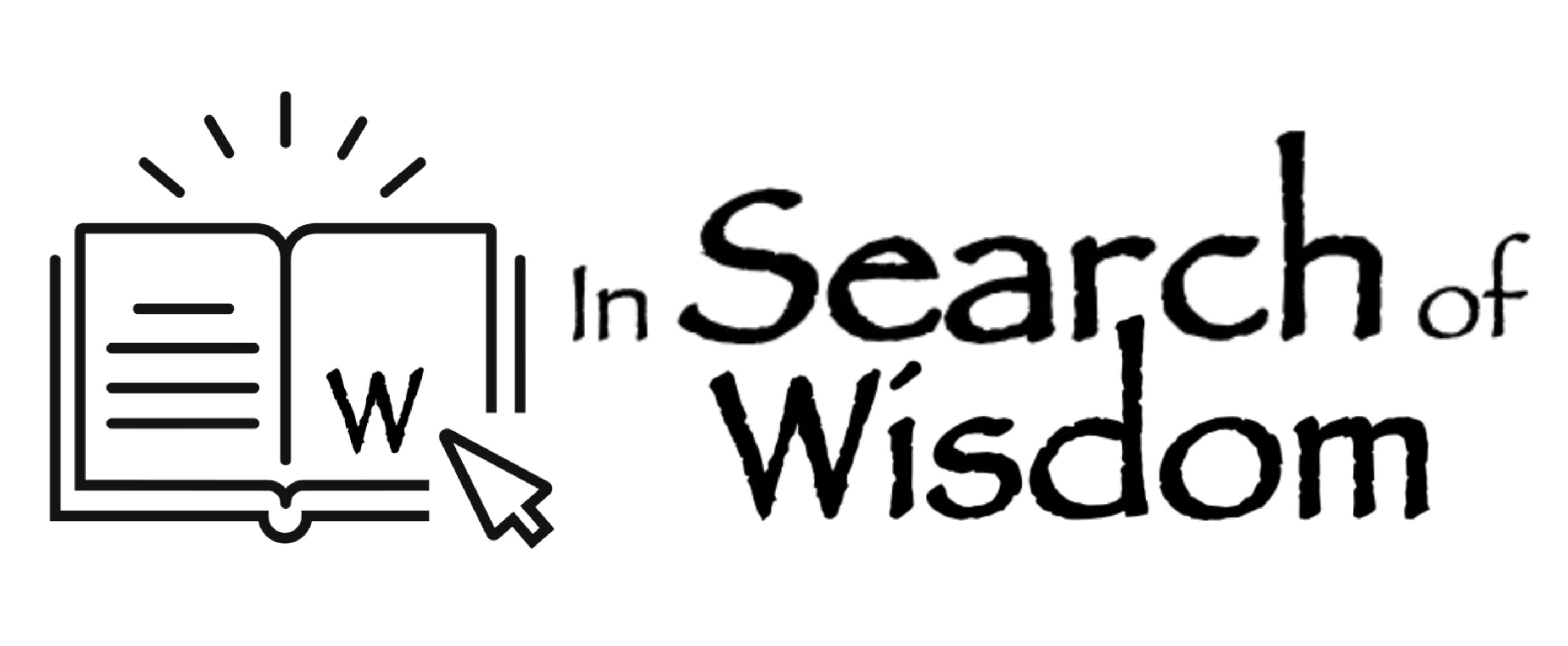
Instructions for Using This Page
Each of the sections of this web page links to a resource that will help to remind you of this module of our Science, Philosophy and Spirituality course. Just click on the section, and you will be linked to the resource.
When you are reading an article from this website online, blocks of text in bold coloured type that make reference to an external source are “clickable”. If you click on them, you will be taken to the resource to which they refer.
Enjoy!
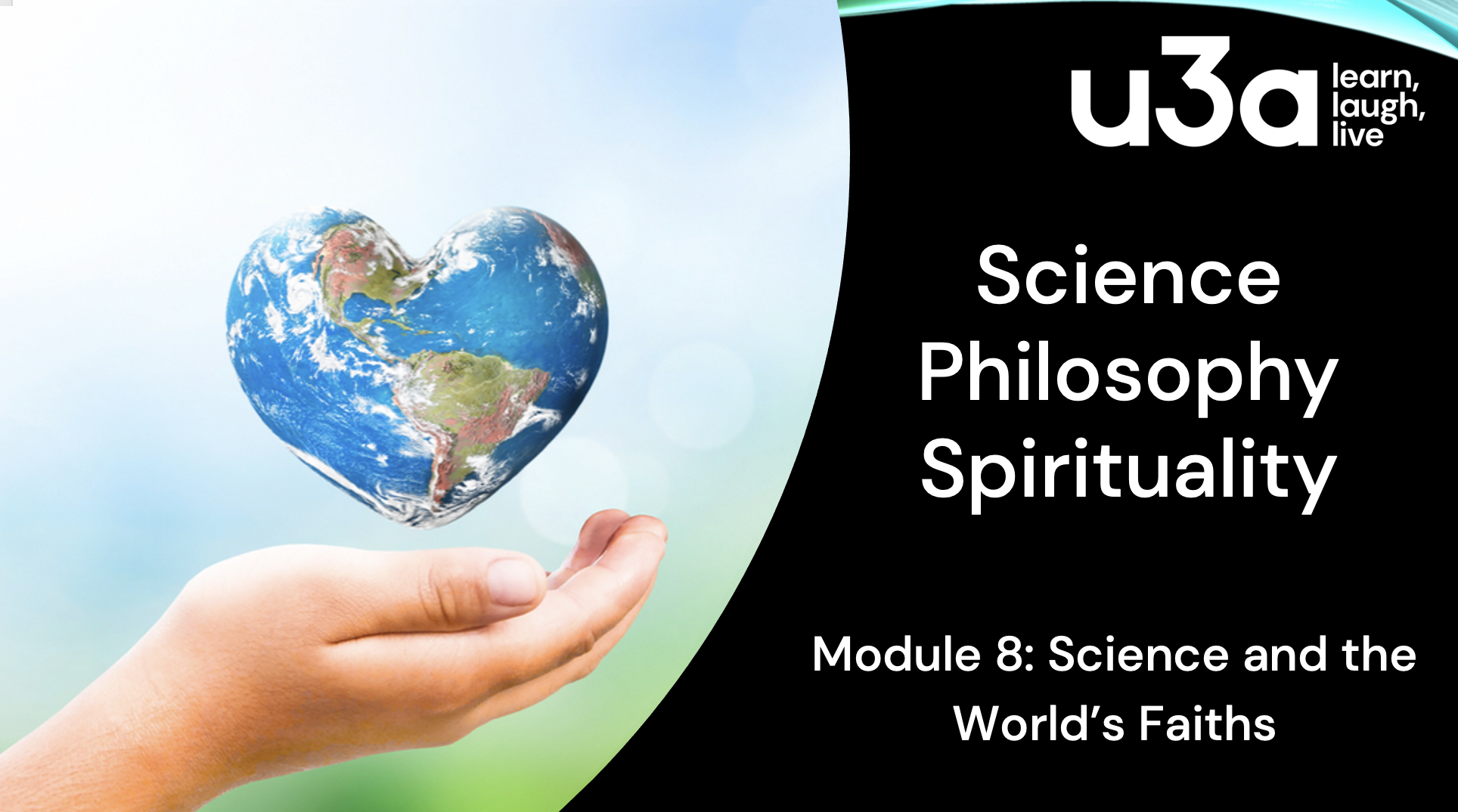
.PDF of the slides shown in the session.
The Module dealt with the entangled relations between science and the world’s faiths at different times and in different places. It considered the whole field of science, and many of the world’s most prominent religions, including Judaism, Christianity, Islam, Buddhism, Hinduism, Taoism and Confuscianism.
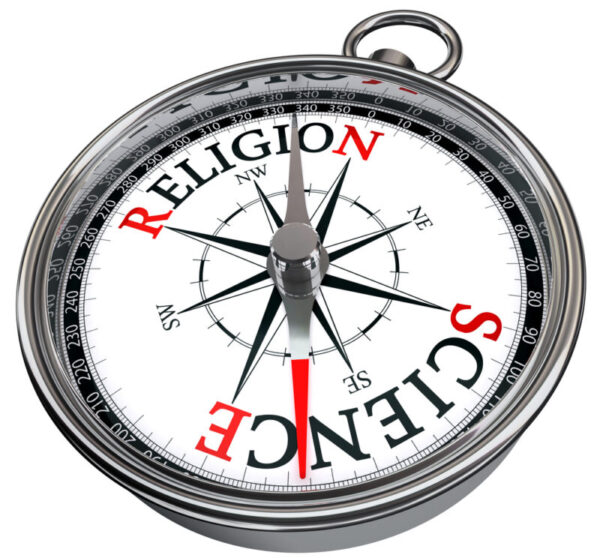
Article
Link to my article, “Science and the World’s Faiths”, which summarises the material discussed during the module.
World Religions Compared
Link to a downloadable version of a table comparing the salient characteristics of nine religions.
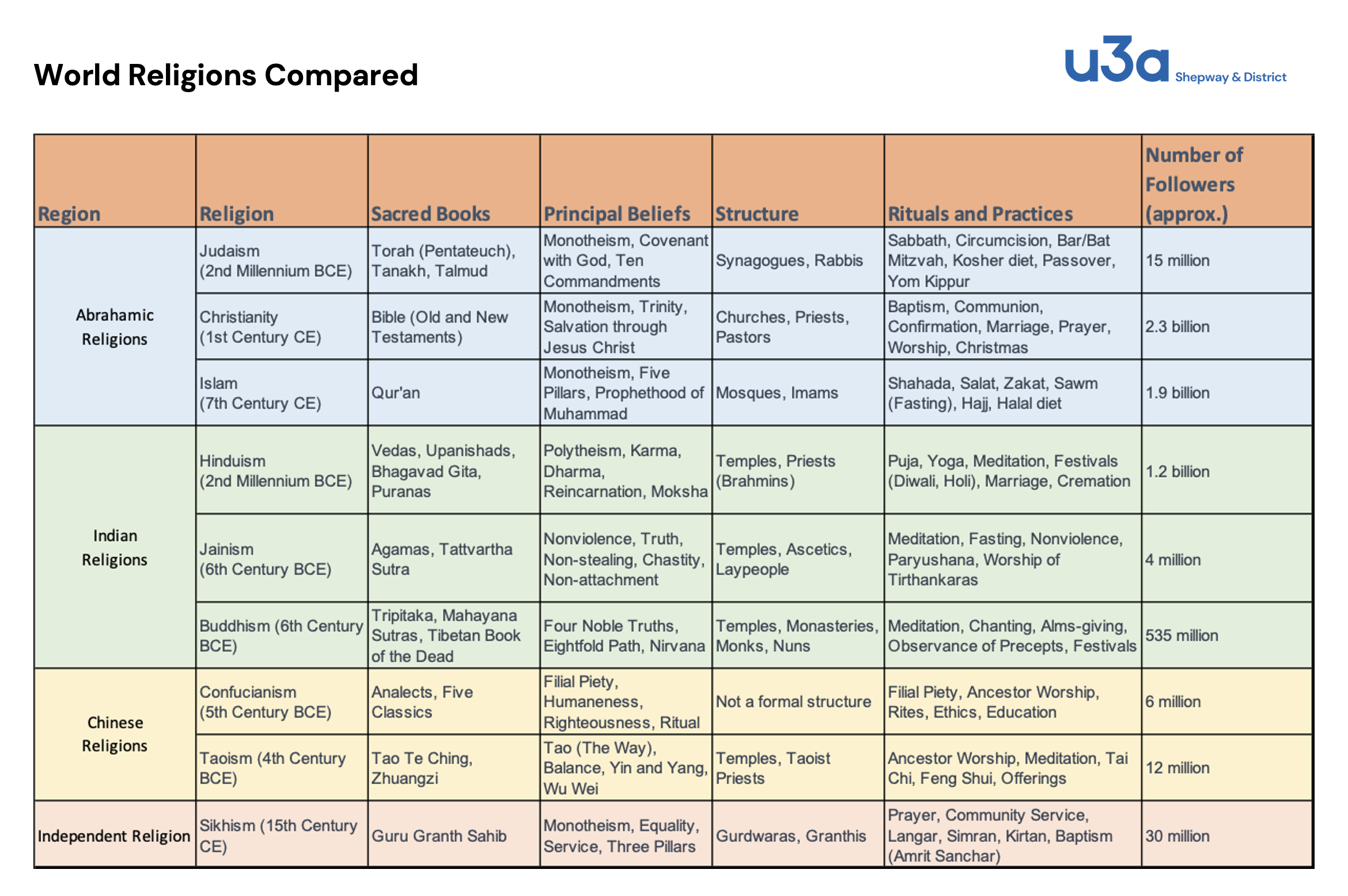
Books referenced in Module: “Science and the World’s Faiths”
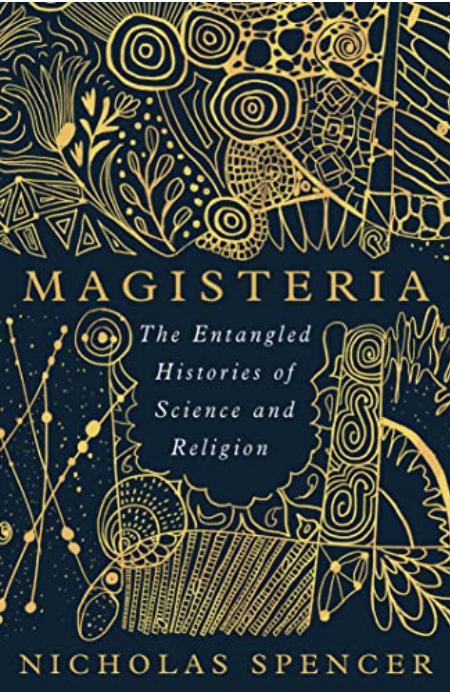
In the words of Amazon.co.uk, “Most things you ‘know’ about science and religion are myths or half-truths that grew up in the last years of the nineteenth century and remain widespread today.
The true history of science and religion is a human one. It’s about the role of religion in inspiring and strangling, science before the scientific revolution. It’s about the sincere but eccentric faith and the quiet, creeping doubts of the most brilliant scientists in history – Galileo, Newton, Faraday, Darwin, Maxwell, and Einstein. Above all, it’s about the question of what it means to be human and who gets to say – a question that is more urgent in the twenty-first century than ever before.
From eighth-century Baghdad to the frontiers of AI today, via medieval Europe, nineteenth-century India and Soviet Russia, Magisteria sheds new light on this complex historical landscape. Rejecting the thesis that science and religion are inevitably at war, Nicholas Spencer illuminates a compelling and troubled relationship that has definitively shaped human history.”
This book was first published as recently as March 2023, and I believe you won’t find a better survey of the topic.
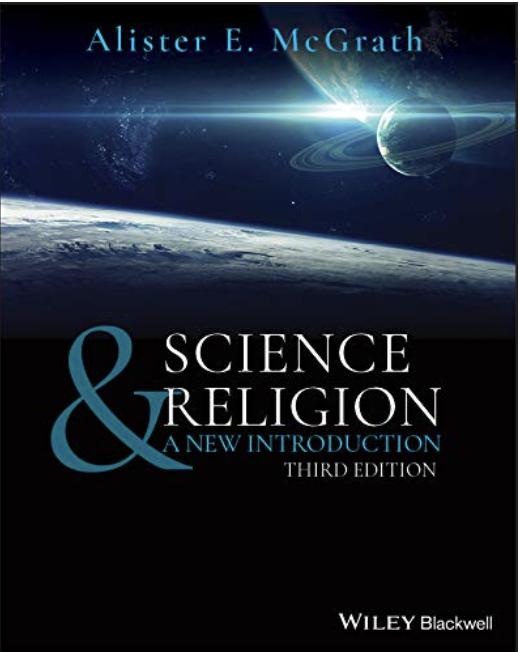
The leading introductory textbook on the study of religion and the natural sciences, written by one of the world’s leading authorities on the study of religion and science.

This brief introduction to the subject provides a broad-ranging and thought-provoking overview of the subject.
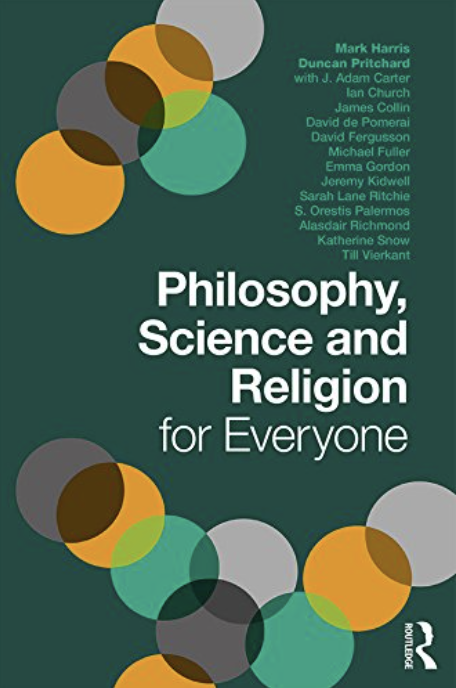
This book is designed to be used in conjunction with the free ‘Philosophy, Science and Religion’ course created by the University of Edinburgh and available at www.coursera,org. It is also an excellent overview of the subject.
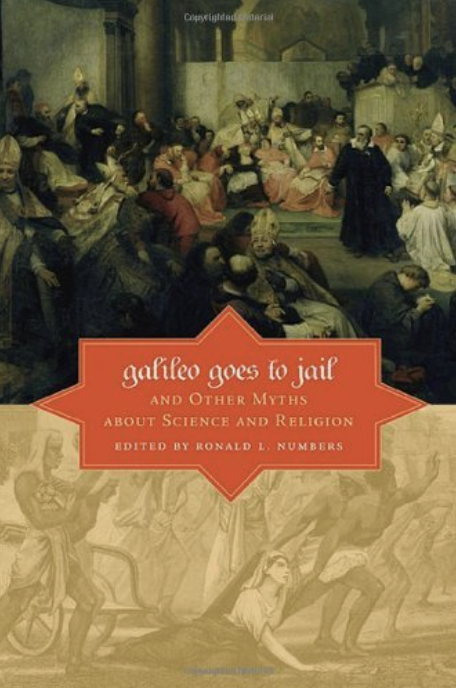
In each chapter of this book, a scholar who is familiar with the topic “debunks” one or other of the “myths” that have arisen in the Science versus Religion debate. From Galileo’s incarceration to Darwin’s deathbed conversion to Einstein’s belief in a personal God who “didn’t play dice with the universe”, each readable chapter enables us to see beyond the myths to a richer picture.

Retired Anglican Bishop Richard Holloway examines what we know about the universe into which we are propelled at birth and from which we are expelled at death, the stories we have told about where we come from, and the stories we tell to get through this muddling experience of life.

Professor of Theology and Philosophy Keith Ward tackles head-on the claims of the New Atheists that it is irrational to believe in religion. Anyone interested in the current cultural war between atheism and belief will find that this book debunks the notion that rationality and intelligence are incompatible with belief in God.

The Norton Anthology of World Religions offers a portable (?) library of more then 1,000 primary texts from the world’s major religions: Hindusim, Buddhism, Daoism, Jusaism, Christianity and Islam. The Book provides an illuminating history of religion, and each section comes complete with accessible introductions, headnotes, annotations, pronouncing glossaries, maps, illustrations, and chronologies.
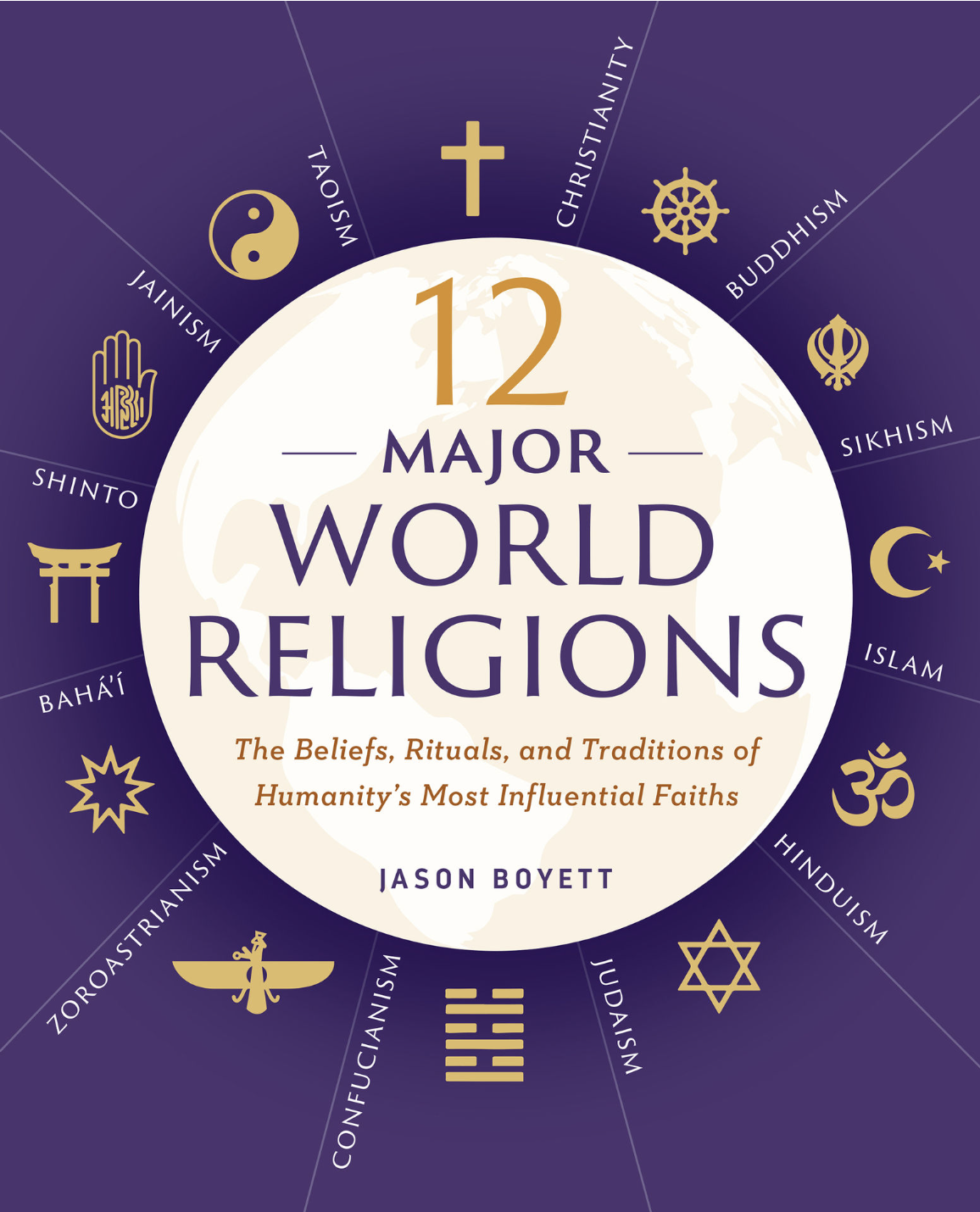
A comprehensive, easy-to-understand exploration of the twelve major world religions from an impartial perspective. If you want to understand a little more detail than is provided in the comparative table used on this course, then this is the book for you.

I included the C. S. Lewis classic because of its appendix, which lists how the world’s religions all mke reference to universal values such as courage and honour. The book itself bears reading as an erudite warning against the dangers of moral ‘relativism’.
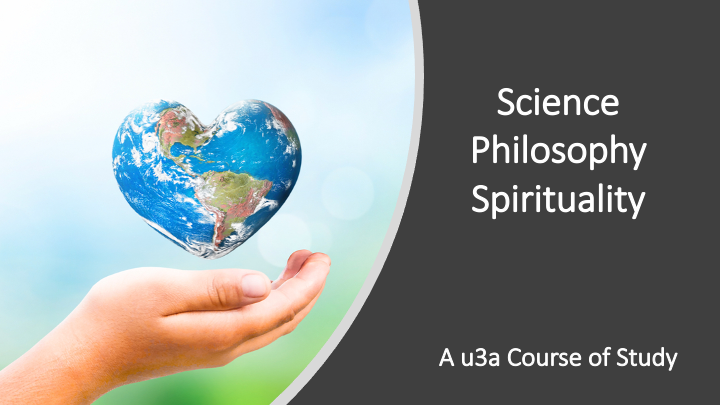
Link to Course Home Page
Click this link to return to the Home Page for Season 1 of the Shepway and District u3a Science, Philosophy and Spirituality programme.
